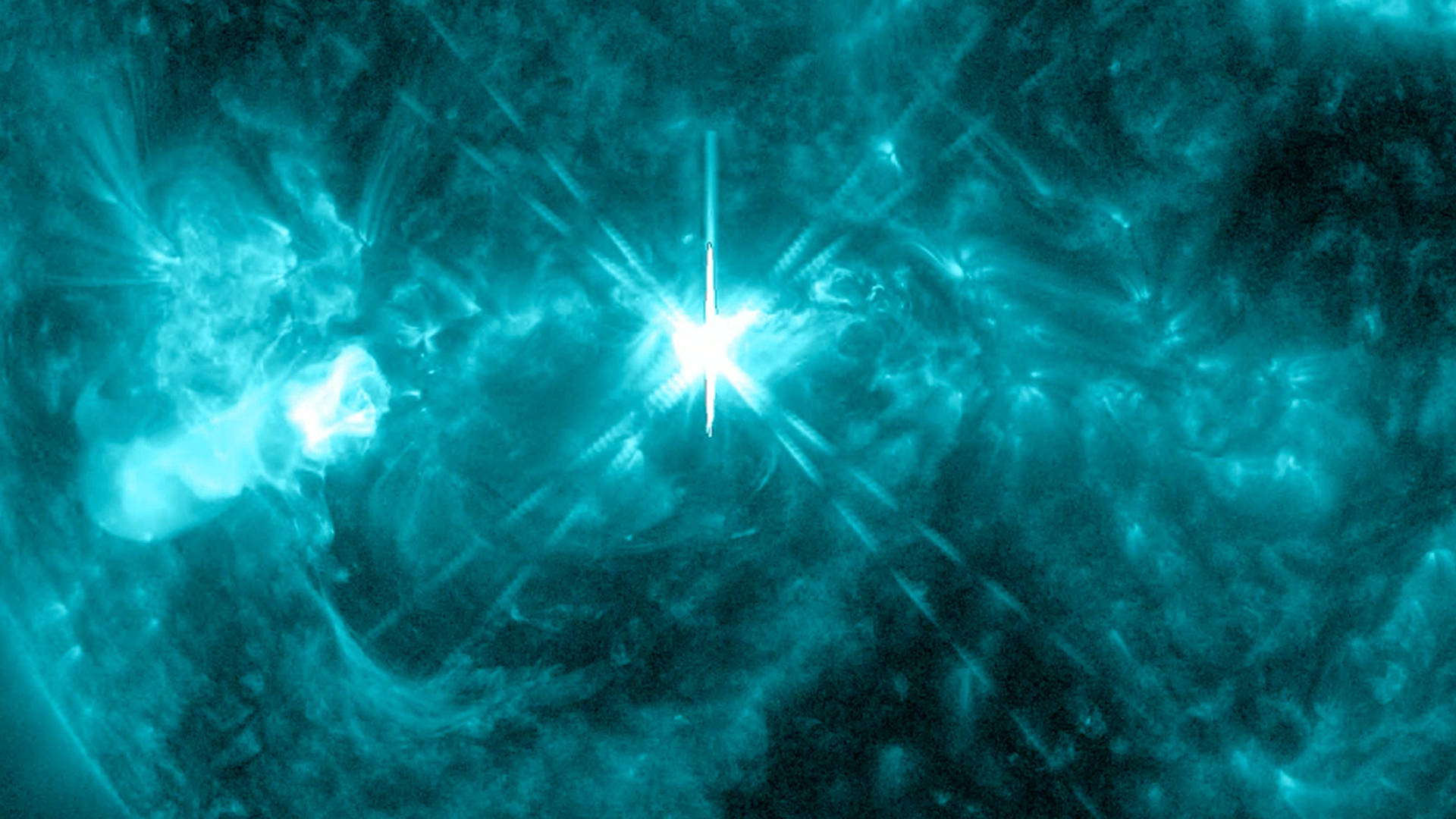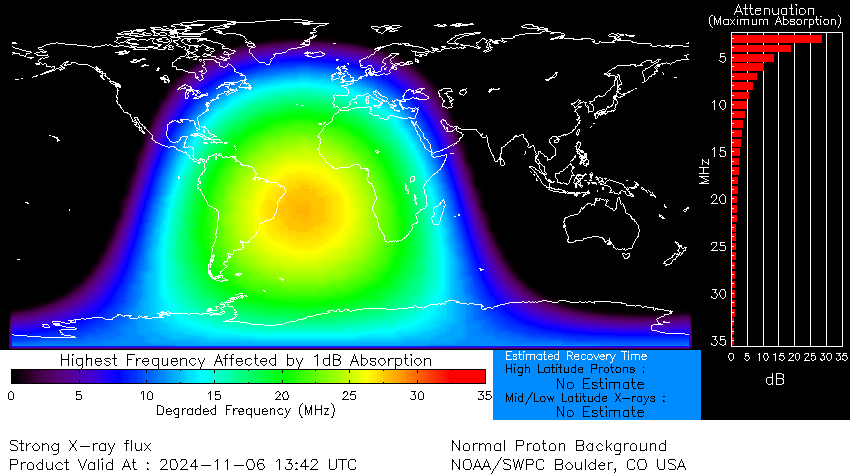
The sun erupted with an X2.3-class solar flare this morning, triggering radio blackouts
The X-class solar flare was released from a sunspot region AR 3883 at 8:40 a.m. ET (1340 UTC) on Wednesday morning (Nov. 6). Sunspots are darker, cooler locations on the sun that measure the size of planets and denote where the sun's strong magnetic field roils up to its surface. It was the sunspot region's strongest flare yet.
According to Spaceweather.com, the wait is on for scientists to receive data from the coronagraph on the joint NASA/European Space Agency Solar and Heliospheric Observatory (SOHO) spacecraft to determine if a coronal mass ejection (CME) will impact Earth. CMEs are made up of magnetic field and plasma plumes and if they reach our planet, can lead to a geomagnetic storm that could possibly result in auroras, also called the aurora borealis or the northern lights.

Some ad blockers can disable our video player.
Solar flares are ranked on a 4-level classification scale, with each class ten times stronger than the one below it. X-class flares come in as the most powerful, with the class down being M-class. The number that accompanies the letter represents the strength of the individual flare, which in this case was a 2.3.
According to the National Oceanic and Atmospheric Administration (NOAA)'s Space Weather Prediction Center (SWPC), the flare came in at a R3-Strong level on the Space Weather Scale. This scale is specific for radio blackouts and denotes the different kinds of impacts the solar flares could have on Earth.

In this instance, with such an intense amount of ultraviolet (UV) radiation that accompanied the flare, a shortwave radio blackout followed in its wake that disrupted high frequency radio signals for different parts of the Atlantic Ocean in the southern hemisphere including in South America and Africa.
SWPC forecasters say the sun is not getting sleepy just yet. There remains an increased likelihood for more rounds of solar flares to erupt with the strength of R1-R2 (Minor to Moderate) and a chance still in the cards for more events at the R3 (Strong) level.







